In this episode of the eLife podcast we hear about ancient proteins, aging mice, mosquito nets, resourceful plants and cocktail party conversations.
In this episode
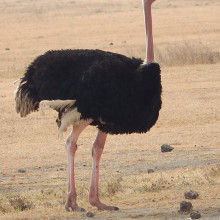
00:36 - Fossilised Proteins: Going back in time
Fossilised Proteins: Going back in time
with Matthew Collins, University of York
Once upon a time, it was widely believed that fossils were just stony replicas of what have previously been living, but now evidence is emerging that vestiges of the original tissues can still remain inside a fossil, stabilised by the chemistry of their surroundings as York University's Matthew Collins explained to Chris Smith...
Matthew - In this study, we've gone back 3.8 million years, but more important than that it's 3.8 million years in equatorial Africa. Previous studies which have found proteins and other molecules far back in time say, for a few million years, they've gone to very cold places - Antarctica, Alaska. But this is in Africa.
Chris - The critical point being that the radiation from the sun, the very intense drying environment, the heat. Those things are going to accelerate any protein degradation. So, if you've got something that's 3.8 million years old under those conditions, it's actually going to age a lot more I would presume.
Matthew - That's absolutely right. In fact in the lab, what we often do is to heat samples to try and simulate a longer period of exposure and then use those heating experiments to try and guess how far back things will persist.
Chris - What will this give us an insight into if you're successful in recovering proteins from various surfaces? Does this tell us where to look?
Matthew - Yeah, that's the whole point of this study. We've really broken through a barrier. We didn't think that proteins could survive even in sort of temperate environments like the environments in the UK, more than about a million years. So to go so far back has been a real breakthrough. And then to understand why we've been able to go so far back is the really key part of this paper.
Chris - Tell us what you've done.
Matthew - So what we did is we went to a range of hominid sites in Africa which have been well dated and we got samples of ostrich egg shell. So, most of these sites have egg shells. We took it as a system to study how the proteins degrade.
Chris - So you get these bits of ostrich egg. What did you do to them?
Matthew - So what we then did is partially acid etched them, powdered them then we'd leave them bleached for 100 hours to really destroy anything that's on the surface, any contamination. Then we would demineralise them and we'd extract what we could from them which included in fact volatile hydrocarbons. They even smell bad when we started to grind them up - the very old ones - because they were so degraded. When we've done that, we looked for the presence of proteins using a technique known as liquid chromatography mass spectrometry. That method allows us to actually see if there are any constituent sequences still preserved.
Chris - The really harsh treatment upfront that is to obliterate anything that might be sticking to it that's more modern than what was originally made when the egg was made.
Matthew - That's right because degradation has destroyed most of what was there and it's very easy therefore to contaminate with small parts of modern proteins. So we're really insistent that we had a very clean sample.
Chris - What did you find?
Matthew - What we found was what the computational chemists have predicted and that was the nice thing because independent of this work and at the same time, a group of scientists at the University of Sheffield were actually modelling how these proteins might interact with mineral surfaces. They had two protein candidates that we gave them, the two most abundant proteins in the egg shell. They had four candidate regions which they thought might survive. The one which, for us, was the most unstable was the one that they predicted will be stabilised when it bounced the mineral surface. From their calculations, they could say that the way that it bounced and the way that was stabilised was going to kind of cooler system by about 30 degrees kelvin. So that part of the protein, they felt will be the one that was going to survive. As we got the data back from the mass spectrometers, what we saw was that the only bit of the egg shell proteins that survived was this one region of the one protein, the one that they had predicted would survive because of its binding to the surface.
Chris - Are the proteins that you're seeing, are they in a fit state to be read? We know that a genetic code begets an amino acid sequence which gives you a protein structure so therefore, one can reverse that cycle and say, "Well, if we know what the sequence of amino acid is, we can have a reasonable guess of what the underlying DNA is, but only if the protein's sufficiently intact." Can you do that, do you think?
Matthew - Yeah, that's what we've done. So, we've read the sequence of this ancient ostrich and confirmed that they have the same sequence as a modern ostrich. It wasn't very exciting but the point was we were actually able to get that sequenced information out. Of course, that's the important thing. If we've got the intact sequence, we actually have a reading from the genetic code or be it, a limited sequence.
Chris - We're being really speculative here. If you've got back to beyond 3 million years ago, that's a 20th of the way to a T-Rex which is when we last think they existed. What do you think the prospect might be to extrapolating this even further back?
Matthew - What we've done in the paper is try to give you a sense of that. What we've done is try to normalise the various temperatures at which various people have found old sequences to a standard 10 degree centigrade cold British climate. At that temperature, those sequences we've looked at now we're surviving about 40 million years, so we're pretty close. And that also implies if we went back even colder, we could get back beyond the 65 million barrier. So yes, but the problem there is, unfortunately, dinosaurs didn't tend to like to live in very cold places. In fact, our Earth was a lot warmer in the past than it is now, both factors which would actually probably preclude recovery of sequence from this type of material.
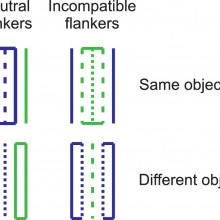
06:31 - Good listeners: cocktail party cognition
Good listeners: cocktail party cognition
with Daniel Oberfeld, University of Mainz
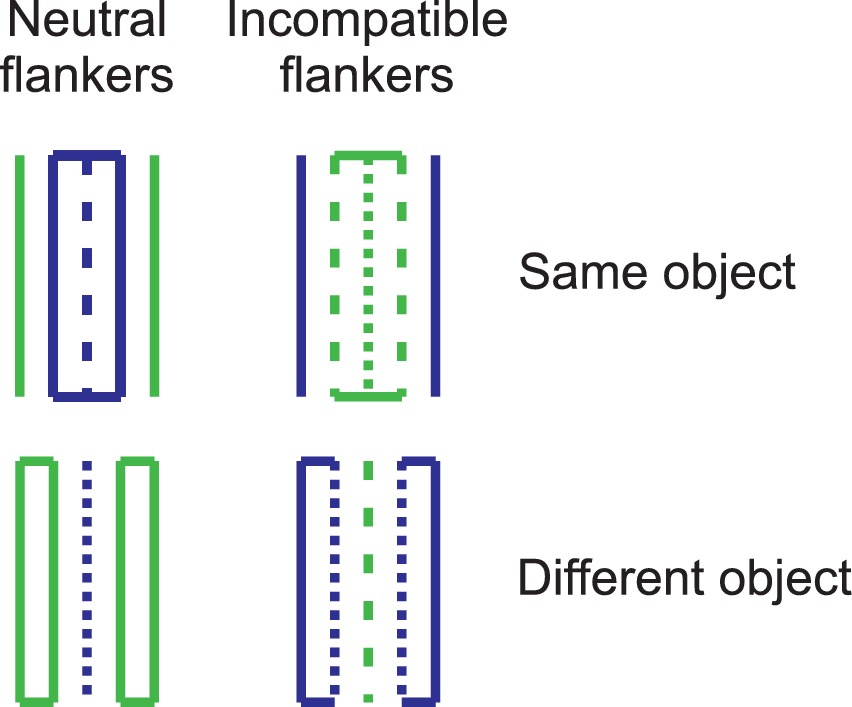 Imagine for a moment that you've just sat down with someone for a quiet chat. It's just the two of you, so the only sound you're going to hear is the voice of the other person. Meaning that following what they're saying isn't at all tricky. But now, let's transport ourselves to a busy restaurant or even a cocktail party. Now, your ears are being assailed by the conversations of many others. Yet, remarkably we manage to zone out that interference and continue to focus exclusively on the speech of the person we're conversing with. But some people find this easier to do than others including people with perfectly normal hearing. So could it be because they are less good at paying attention. Chris Smith listened intently to experimental psychologist Daniel Oberfeld...
Imagine for a moment that you've just sat down with someone for a quiet chat. It's just the two of you, so the only sound you're going to hear is the voice of the other person. Meaning that following what they're saying isn't at all tricky. But now, let's transport ourselves to a busy restaurant or even a cocktail party. Now, your ears are being assailed by the conversations of many others. Yet, remarkably we manage to zone out that interference and continue to focus exclusively on the speech of the person we're conversing with. But some people find this easier to do than others including people with perfectly normal hearing. So could it be because they are less good at paying attention. Chris Smith listened intently to experimental psychologist Daniel Oberfeld...
Daniel - My research focus is auditory perception. Studies during the last 10 years or so showed that persons really differ a lot in the capability of understanding in an acoustically difficult situation. In particular, these difference even apply to listeners with normal hearing. That was the motivation for our study to gain a closer look on this and to identify potential factors which cause these differences between persons.
Chris - So what did you do and who did you do it to?
Daniel - We conducted these experiments in 50 relatively young listeners with normal hearing. Our basic idea was that we need to look not only at basic hearing capabilities but also to more cognitive processes because singling out a single person's voice from an acoustic soundscape requires selective attention. So we use a so-called virtual acoustic setup where the subject has headphones then we recreate a spatial sound scene where one listener is presented from directly in front of the listener and there's a target speaker. This target speaker produces very simple sentence like, "Peter buys 8 wet knives." And then there are two other speakers, so-called interfering or distracting speakers which are located slightly to the left and to the right. They produce similar sentences and the challenge for the listener is to ignore these interfering speakers and then to repeat the words this target speaker produced.
Chris - What happened? Do people perform differently?
Daniel - Absolutely. So, we saw a pretty large variability in percentage correct in the speech identification task. The percentage of correctly identified words ranged between less than 50 per cent to almost 100 per cent.
Chris - How do you relate their accuracy to their ability to pay attention to the task?
Daniel - Right. We used a very simple acoustic task namely intensity discrimination where you listen to two pure tones and one of the pure tones is a slightly higher sound pressure level. And you always have to identify the louder sound essentially. After each of these two tones, an additional tone is played.
Chris - You've effectively got to hold both of those sounds in working memory and then disregard the effect of that subsequent masking sound in order to make a valid comparison between the two stimuli, haven't you?
Daniel - Absolutely. So that is something which is a situation where you need selective attention.
Chris - If you now take the results of the people who are very good or very bad at doing those discrimination tasks and you ask, are they the same people who do or don't do well on the cocktail party effect? Do you see a relationship?
Daniel - Yeah. That was the interesting and also predicted finding. The important conclusion of our study is that cocktail party listening, the ability to understand speech and noises indeed related to hearing capabilities but also, we found a significant influence of a more cognitive capability to focus attention on a target stimulus while there are other informations around which you need to ignore. There seems to be an important influence of higher processing stages as we call it the cognitive processing in the sense of selective attention.
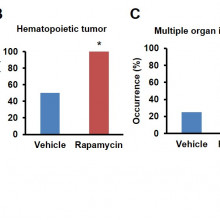
12:00 - Great expectations: rapamycin longevity
Great expectations: rapamycin longevity
with Matt Kaeberlein, University of Washington
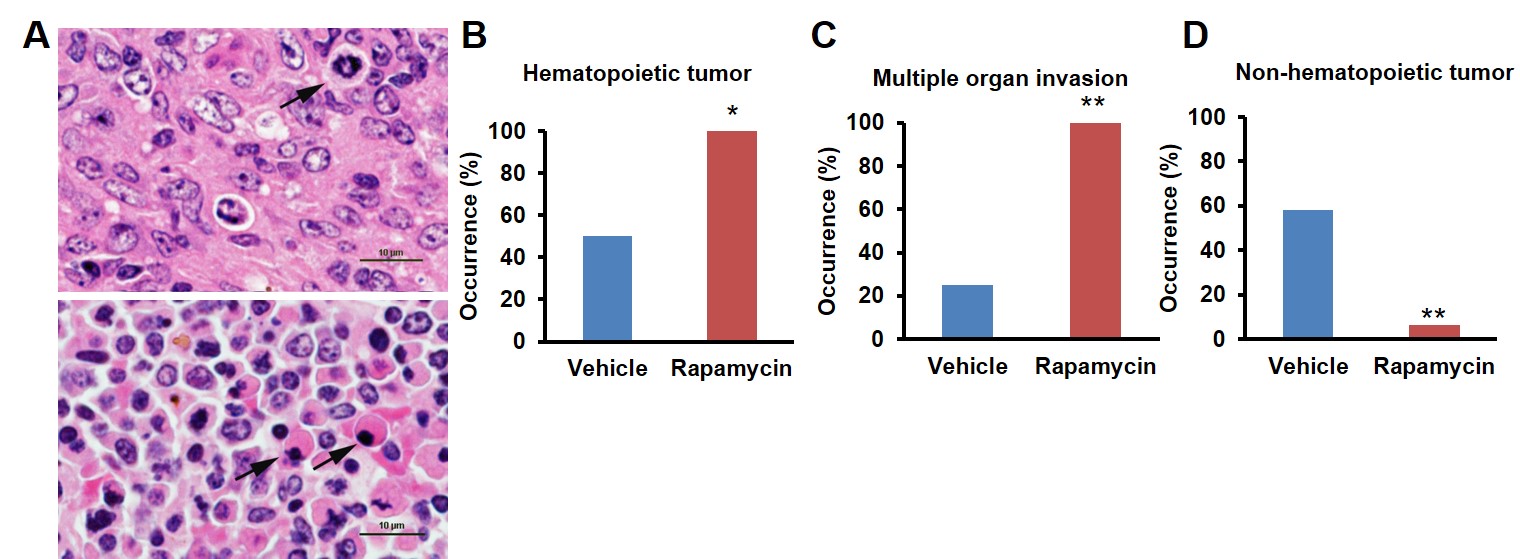 The drug rapamycin is used to prevent rejection of transplanted organs. But it also has the effect of extending lifespan although we don't know exactly how at this stage. We also don't know whether this longevity boosting effect occurs equally in males and females, at higher or lower doses, whether a short course of a drug is as good as lifelong use or if the age at which treatment begins makes a difference. Matt Kaeberlein from the University of Washington recruited a cohort, a middle-aged mice to investigate, as he explained to Chris Smith...
The drug rapamycin is used to prevent rejection of transplanted organs. But it also has the effect of extending lifespan although we don't know exactly how at this stage. We also don't know whether this longevity boosting effect occurs equally in males and females, at higher or lower doses, whether a short course of a drug is as good as lifelong use or if the age at which treatment begins makes a difference. Matt Kaeberlein from the University of Washington recruited a cohort, a middle-aged mice to investigate, as he explained to Chris Smith...
Matt - So rapamycin is a compound that was isolated on Easter Island or Rapa Nui. That's where it gets its name rapamycin. It's isolated from a bacterium called Streptomyces hygroscopicus and it is a specific inhibitor of this protein called TOR which stands for Target of Rapamycin. You can think of it as a molecule in the cell that involves sensing the nutrients that are available in the environment and then helping the cell decide how to respond appropriately to how much nutrient is around. When there's lots of nutrients around, lots of food around, that's a good time to grow, divide if you're a cell, reproduce if you're an organism, and that turns TOR activity up. The opposite of that is when there's not a lot of food around, that's a good time to stop growing, become stress resistant, and it turns out, live longer. And so, rapamycin is a drug that kind of mimics that low food or low nutrient condition.
Chris - What does it do in the bacterium living on Easter Island that makes it?
Matt - So that's a good question. I think people don't really know the answer to that. It's been speculated that as a way to help that bacteria actually compete against fungi that are also in the soil. So, it doesn't slow down the division of bacterial cells because bacterial cells don't have this TOR in their cells. It's a molecule that is only present in the cells of eukaryotic organisms. So, cells like fungi, rapamycin might slowdown those cells' ability to divide and allow the bacteria to compete better.
Chris - We know that if you restrict calories for an individual, they do appear to live longer. Lifespan can be extended. Are you arguing that rapamycin in some apes or mimics that process?
Matt - So certainly, I think everybody would agree that to some extent rapamycin does mimic caloric restriction. We know that caloric restriction turns down TOR activity and we also know that rapamycin does that. My sort of view is that caloric restriction and rapamycin have overlapping but also distinct mechanisms of action.
Chris - So, what did you do in the present study to see what it would do in mice?
Matt - We obtained middle-aged mice. We aged them to 20 months of age and then we split them into two groups. One group got a control treatment and the other group got rapamycin for 3 months. We stopped the treatment and we just kind of watched to see what would happen. Our prediction was that the short term treatment with rapamycin would increase lifespan and improve at least some measures of health. And that's exactly what we saw. So, we tested a couple of different doses but the take home message is, that in both experiments, we saw increase in lifespan and we also saw improvements in some measures of muscle function. So it looks like short term treatment with rapamycin in middle-aged mice is enough to give long term benefits.
Chris - When you said there was a longevity effect, it prolonged the life of these animals, what are we talking here, a matter of weeks, months, or even years?
Matt - It depended a little bit on the dose and the cohort, but the biggest effect that we saw was in the male mice at the highest dose. So they got the drug for 3 months and their absolute lifespan was increased by about 140 days. So, that works out to about 15 per cent increase in total lifespan or 60 per cent increase in life expectancy where we're defining life expectancy as the length of life after the treatment was stopped.
Chris - Do you anticipate that had you wound back the clock further and started with younger mice that the gain would've been even more profound or do you think it would be about the same?
Matt - That's a really good question. So, my guess is, it would be about the same. It might be a little bit bigger but I don't think it would be a lot bigger. In fact again, this magnitude of effect that we saw from this short term treatment is pretty close to what has been published for lifelong treatment starting at 9 months of age with this drug.
Chris - So having managed to defer death in these animals, what did they die of?
Matt - So we don't completely know the answer to that question. What we do know in this case is that particularly in the female mice, they showed very striking changes in the kinds of cancer that they died with. The female mice getting the high dose of rapamycin had many more hematopoietic cancers or cancers of the immune system than the control treated mice. So, we believe that that contributed to their death and cause them not to have a life span extension from rapamycin. So that's interesting. The other thing that was really unexpected and interesting though was that they were completely protected against non-hematopoietic cancers. Only one of the female mice in the entire cohort that had gotten rapamycin had a non-hematopoietic tumour. And so, that suggested to us that what rapamycin did in those animals is that it shifted the cancer spectrum so that there was an increase in these immune cancers and a dramatic decrease in other kinds of cancers.
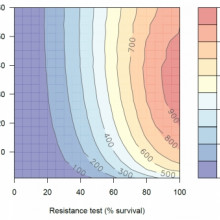
17:39 - Net gains: modelling malaria
Net gains: modelling malaria
with Tom Churcher, Imperial College London
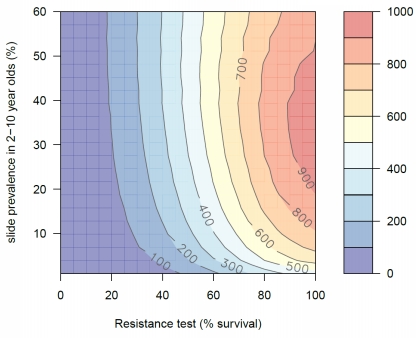 There are hundreds of millions of cases of mosquito-borne malaria every year and up to half a million children are dying of the disease. Until we have a vaccination, the mainstay of malaria prevention which accounts for enormous international investment are bed nets laced with long acting insecticides like pyrethroids. These prevent people being bitten in the first place and they also help to supress the mosquito population which protects people who are not under a bed net. But mosquitoes are becoming increasingly resistant to the pesticides although not everywhere and not at the same rate. So policy makers need to know how to adjust their strategy in the most cost-effective way. But the data on bed net performance is patchy and noisy. Imperial College's Tom Churcher tells Chris Smith about his new model that combines these weaker, smaller studies into a much more powerful predictive mechanism.
There are hundreds of millions of cases of mosquito-borne malaria every year and up to half a million children are dying of the disease. Until we have a vaccination, the mainstay of malaria prevention which accounts for enormous international investment are bed nets laced with long acting insecticides like pyrethroids. These prevent people being bitten in the first place and they also help to supress the mosquito population which protects people who are not under a bed net. But mosquitoes are becoming increasingly resistant to the pesticides although not everywhere and not at the same rate. So policy makers need to know how to adjust their strategy in the most cost-effective way. But the data on bed net performance is patchy and noisy. Imperial College's Tom Churcher tells Chris Smith about his new model that combines these weaker, smaller studies into a much more powerful predictive mechanism.
Tom - So there's many ways in which an insecticide might not impact a mosquito in a way it did previously. The way we measured this is using something called experimental hut trials where you have a fake house and you have somebody sleeping under a net and you see how many mosquitos come in the window, how many successfully feed, how many die, how many leave the house without biting. So this is called an experimental hut trial. There's been quite a lot of these done in different areas. So, what we wanted to do was, we wanted to collate all this information together and we wanted to see how mosquito behaviour as measured in these hut trials, these fake houses, how that has changed with the level of insecticide resistance. Problem is, it's actually very difficult to assess the public health impact of resistance on malaria directly. Malaria, data is very noisy and is influenced by lots and lots of things. So it's not obvious when you start having failure of the nets. It could increase the number of cases but it might not be so obvious.
Chris - What has emerged then? What are the findings from the study?
Tom - What appears to be the case is a little bit of resistance and bed nets are still working well, protecting the person sleeping under them. When you have a little bit of resistance, you might not be killing the mosquito but the person underneath the net is still protected. However, there's a slight issue there that because you're not killing the mosquito, that mosquito survives to fight another day or bites somebody else, might bite you when you get out of your bed net. And so, a little bit of resistance. The nets are still working when you're under them but they're not doing as well as they were before by killing the mosquito. Only when you get relatively high levels of resistance, do actually mosquitos seem to actually come away and bite through the net, and come away fed when somebody is sleeping under the net.
Chris - Just define for me, what is a little bit of resistance and what is a lot?
Tom - So, a little bit of resistance and still the majority of your mosquitos that are exposed insects will die i.e. 80, 90 per cent of the mosquitos will die. A lot of resistance, very few of your mosquitos will die. Only 10, 20, perhaps 0 per cent of your mosquitos will die.
Chris - And so the take home message is that we can tolerate a little bit of resistance because there still overall net benefit - excuse the pun - even in the face of resistance. But once you start to get very high levels of resistance in the population, we've got to rethink the strategy.
Tom - Yes. Though even a little bit of resistance, you will perhaps lose some of the protection provided by the net by killing mosquitos. So if you're under a net, yes, a little bit of resistance is fine but if for some reason you're not under a net, then a little bit of resistance still might be a problem for you because there'd be more mosquitos flying around.
Chris - Can your study, also take into account the equivalent to herd immunity because if we look at the human population, we vaccinate 90 per cent of people against MMR for example, the 10 per cent who can't be vaccinated for whatever reason are protected by the overwhelming level of resistance in the herd. If you've got lots of people under bed nets and those bed nets are killing off mosquitos, does there therefore become a fringe benefit for people who don't have a bed net but because mosquito population is being decimated by insecticidal bed nets, they're protected.
Tom - It's completely the same principle. If you have a bed net in the community, you're going to be increasing the death rate of the mosquitos. There'll be fewer mosquitos around. There's going to be fewer mosquitos and this is the critical thing that survive long enough to transmit malaria because it takes 10 days for the parasite to develop in the mosquito. So, if you've got lots of old mosquitos in your population, you're in trouble, lots of young mosquitos, you're okay. And so, the idea is that you get a large number of bed nets in the community and mosquitos, they're dying in larger numbers and you get this kind of community's herd benefit for everybody, not just those people sleeping under nets.
Chris - So, if the WHO were to walk into your office tomorrow and say, "Tom, what do we need to do?" What's the summary take home message from this?
Tom - Like every scientist, you ask for more evidence, but there needs to be more evidence for the actual public health impact because so much money is spent on them that it's really important that we're A.) Buying the right net and B.) Utilising them in the most appropriate way.
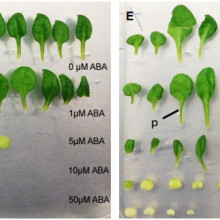
23:00 - Dry spells: Drought-resistant plants
Dry spells: Drought-resistant plants
with Kathy Barton, Carnegie Institution for Science
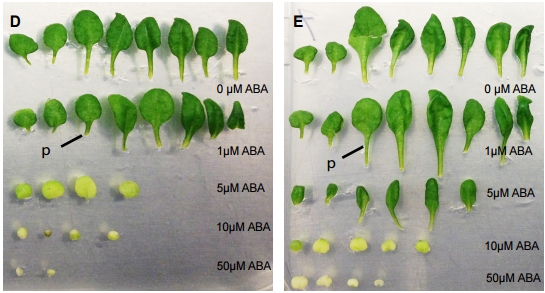 Plants do not respond well to a lack of water. They wilt, yellow, and they drop their leaves which is not good if they're a crop plant. Particularly, since rising human populations mean more marginal land is being pressed into agricultural service and we have the threat of climate change to consider too. So can plant scientist Kathy Barton come to the rescue? Chris Smith found out...
Plants do not respond well to a lack of water. They wilt, yellow, and they drop their leaves which is not good if they're a crop plant. Particularly, since rising human populations mean more marginal land is being pressed into agricultural service and we have the threat of climate change to consider too. So can plant scientist Kathy Barton come to the rescue? Chris Smith found out...
Kathy - I'm lucky enough to work at a place where we do science because we're interested in the answers whether or not they turn out to be important or useful. I'm also luck enough that this latest work that we've done wasn't just interesting but it actually turns out possibly to have some useful implications for generating drought tolerant plants. Personally, I'm interested in how plants grow and what controls that. They grow in response to their environment. If they're in a rich environment, they'll grow better than if they're in a poor environment. How do those environmental cues get passed along to the genetics of the plant to make it grow rapidly or slowly? Fairly simple questions but things we don't know very much about.
Chris - Do we know the mechanisms by which plants gauge their growth and development to meet the demands of the environment?
Kathy - So a lot has been done on both of those problems. A lot has been done on that inherent developmental blueprint. A lot has been done on environmental sensing. But joining the two together has just now, by a variety of labs, begun to happen so that we actually understand how the two programmes, intrinsic and extrinsic are linked.
Chris - What have you found?
Kathy - We kind of actually stumbled upon because we were interested in that intrinsic programme. So a mutant that is insensitive to the hormone called abscisic acid that when added to the plant inhibits growth. It's believed that drought increases this hormone and then thereby, growth is inhibited. Our mutant is resistant to that process and it grows better when water is withheld than a normal, non-mutant plant. We think this is because the plant actually, it has enough water but it's sensing that there's less. And so, it's starting to slow its growth, recycle nutrients out of the leaves, perhaps in anticipation that it's going to be in hard times.
Chris - So your mutant for want of a better phrase, sail a bit closer to the biochemical wind than your average plant.
Kathy - Right. So maybe that threshold is a little bit tighter than it needs to be.
Chris - Have you unpicked exactly what's happened in those mutants to make them have this unusual ability?
Kathy - Well, we know that the defect in these is a defect in the transcription factor. Transcription factors control the repertoire of proteins and RNAs that are present in a plant. So, we have looked at what genes this transcription factor controls and many of those are involved in stress responses. That makes sense because we now have the environment through abscisic acid controlling this transcription factor which then turns on stress response genes. And maybe here, it would be worthwhile saying that in plants, when we talk about stress, even though Bill Clinton made fun of people working on plant stresses that we were working on plant psychology, actually, stress in plants is meant to be cold stress or drought stress, or salt stress, or heat stress. So we're talking about physical stresses. Not about psychological stresses to the plants.
Chris - Why has evolution allowed plants to be so conservative in this way? Why make it so that they are so cautious?
Kathy - Well, Arabidopsis is a weed. It would rather live to see another day if it can recycle nutrients out of its leaves and put them into seed, perhaps that's selective. For now, I don't know the answer to your question, but that would be perhaps one way to think about it. Whether our domestic crop plants are going to be where they live on this edge, and whether we've already domesticated them to the point where they don't pack it in quite as early, we don't know. We know that all plants have these transcription factors. We know that maize has them and we're trying to find out if the maize proteins do the same thing as the Arabidopsis proteins.
Chris - Do you have any idea as to how the mutation affects the ability of the plant to respond to stress? I know you've unpicked the pathway as to what appears to happen but do you actually know the intricate nuts and bolts now so that we can begin to say, "Well, we could tweak other plants in the same way and render them a bit more drought tolerant"
Kathy - We know that the mutation is a simple loss of function. That means that the mutation is simply a reduction in the amount of this protein. So that would make it pretty trivial to generate a similar mutation in maize for instance.
- Previous Genes linked to friendly dogs
- Next How do we see distant stars?









Comments
Add a comment